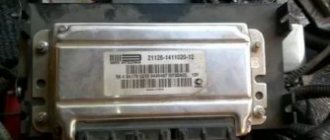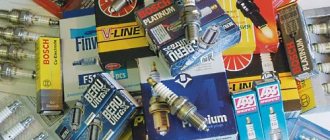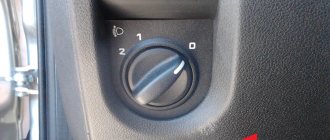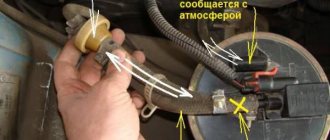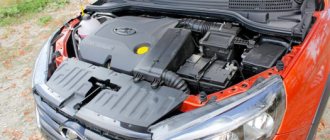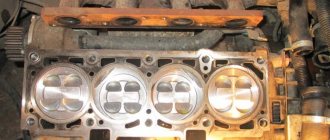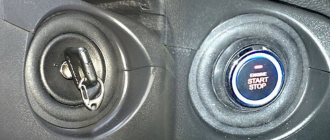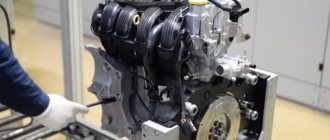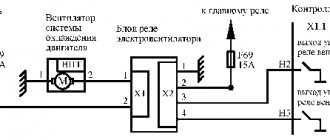Supply system
The engine fuel system consisted of a fuel tank, pump, carburetor and connecting pipes on all Lada-Sputnik vehicles and was 43 liters. The carburetor of engine 21083 was produced under license from the French company Solex and was quite reliable in operation. The problems could only be caused by a stuck idle air valve.
Production of engines with this fuel system continued until the early 2000s, but increasing demands on fuel consumption and exhaust gas purity led to significant changes in the fuel system. Already in 1994, the first small-sized engines 21083 with an injector appeared. Injection engines reduced power to 70 hp. C. During the first years of production, most of these machines were exported.
The pre-injection system used Bosch or General Electric components. Then, under the designation “January”, the domestic fuel injection control system began to be used.”
Lubrication system
The engine is equipped with a mixed lubrication system: some components are lubricated by a gear pump (shaft bearings), and some are lubricated by gravity and splashing (pistons, cylinder mirrors and other components). The amount of oil in the crankcase is 3.5 liters, but all the oil has not been drained and 3–3.2 liters of oil is enough to change.
Engine oil 21083 must have high lubricating characteristics and the ability to maintain its properties for a long time at various temperatures. Initially, M6/10G or 12G mineral oil was recommended for the engine.
Currently, owners use mineral or semi-synthetic oil with a viscosity index of 5W40 or 10W40. There is a risk of leakage when using full synthetic oil. This is especially true for engines with high mileage.
Information tag
In addition to the papers for the car and the aforementioned brand, all information is also present on a special metal plate that is attached to the body with rivets.
It states:
- VAZ-2115 body identifier;
- year of issue;
- Business name;
- some technical characteristics of the car.
When you open the hood, you will immediately see a rectangular tag. It is located on the opposite edge of the engine compartment, slightly to the left of center when facing the windshield.
Despite the fact that the described plate only duplicates the information, its safety is also important. Clean it regularly, remove rust and ensure secure fastening.
You can also find the VIN code at:
- right front axle shock absorber strut;
- in the trunk, at the bottom of the spare wheel niche.
Decoding information
Let's find out what the letters and numbers embossed on the power unit itself, other parts of the VAZ-2115 and the information plate mean.
There are two lines on the engine. The first shows its type, and the bottom shows the actual seven-digit identifier.
The numbers on the information plate have different interpretations. The one stamped on the left, vertically, is used to indicate spare parts. Also outside the frame, but below, are five numbers. They report on the configuration option of the car.
In the center at the top is the familiar abbreviation VAZ - there is no point in deciphering it. Below it is the code of the certificate of conformity issued by Rosstandart.
Next, the VIN code is stamped large. In it, the first three positions are occupied by the letters XTA - this is the international designation of the domestic automaker. They are followed by 5 digits - the car model, for example, 21150. After it comes the year (for example, 07 is 2007). Next are seven characters of the body number.
The type of power unit is indicated below, and then there are:
- limit values of loads on the front and rear axles;
- the mass of the vehicle itself;
- its total limit weight with the trailer.
How to replace a car body
Main stages of technology
- To remove the 2109 body from the chassis, it is necessary to carry out a number of preparatory measures, in which case the car must be placed in a viewing hole and a winch (or some other lifting mechanism) must be prepared.
- Remove the hood, radiator grille, upper radiator trim panel along with the hood lock.
- Drain all liquid from the engine cooling system. Disconnect the hoses from the radiator pipes, unscrew the radiator fasteners and pull it out. Don't forget to disconnect the pipes from the interior heater tap.
- Drain the brake fluid from the brake system and clutch drive. In this case, the brake hoses screwed to the pipes going into the body must be disconnected.
- Disassemble the accelerator drive and parking brake. Disconnect the steering column shaft and the steering gear shaft; disconnect the electrical wires coming from the passenger compartment, and also remove the speedometer cable from the gearbox.
- The body and supporting system of the car are connected by bolts that need to be disconnected. The front bolts can be reached from the engine compartment. To gain access to the middle bolts, you will have to remove the plastic floor mat pads in the cabin (they are located behind the footrests). You can “get” the remaining bolts from the trunk (they are there under the floor plugs).
- Unscrew the bolts securing the floor hatch cover and remove it. In this case, the rubber seal must remain on the gearbox.
- Carefully lift the body using the lifting mechanism; must be hung from doorways (keep doors open).
- Assembly is carried out in reverse order.
At the car plant, the car body is manufactured without anti-corrosion treatment. Therefore, after replacement, it is better to immediately begin this process (while there is convenient access to all problem points).
Additional work
When the replacement of the body of a passenger car is completed, it is necessary to inspect and, if necessary, restore (replace) the remaining elements:
- Hood: when installing it, it is necessary to adjust the lock and hinges;
- Rear, front bumper (the rear is secured with a pair of nuts on each side, the front is screwed with side and front nuts);
- Radiator grille (attached with two screws that can be removed from under the hood, plus a central plastic latch);
- Front fenders: fastened with self-tapping screws using sealant (the fenders must be installed before installing the front bumper);
- Trunk door (lid);
- Side doors.
How the body of a VAZ 2101 is restored. You can learn more about auto tuning by reading our interesting article.
What do the numbers in the car brand mean?
The first digit shows the class of the car according to one of the technical parameters (engine displacement - cars, overall length - buses, gross weight - trucks), the second digit is an index of its purpose or body type (1 - passenger car, 2 - bus, 3 - 7 - a truck with various...
What do the numbers in the car brand mean?
1. The first digit indicates the class, the second - the type of car, the third and fourth - the model number, the fifth (if any) - the serial number of the modification.
- What is a battery in a car?
- What kind of oil to fill in Hyundai Creta
- What is MI Box S?
- How much oil is in a Mercedes engine
- You asked: How to enable Always On Display on a Samsung watch?
- How to start the starter with a screwdriver
- What do the letters on the battery mean?
- What to do if the water in the tank is frozen
- Hyundai Creta tire pressure sensor
What do the numbers in the vase models mean?
For example, VAZ-2105 and VAZ-21053 mean: VAZ - Volzhsky Automobile Plant, numbers 21 - small class passenger car, numbers 05 - fifth model (basic), number 3 - third modification. ... The third and fourth digits are the car model number, and the fifth digit is the modification number. For example, ZIL-4331 means Plant named after.
What do the first two digits of basic passenger car models mean?
The first 2 digits indicate the vehicle's gross weight class, the second 2 digits indicate the model, the 5th digit indicates the model modification.
What classes of cars are there?
- A class - mini cars (microcars) ...
- B class - Small cars (small cars) ...
- C class - Medium cars (European “middle class”)...
- D class - Larger cars (large family cars) ...
- E class - Executive cars ("business class") ...
- F class - Luxury cars (executive cars)
General information
Engines of the VAZ-21081 (1100 cc), 2108 (1300 cc) and 21083 (1500 cc) models were developed specifically for the new family. In the early years, cars were equipped with engines of 1100 and 1300 cc. See: The first 54-horsepower version was exported; Such cars were practically not sold within the USSR. Most cars for the domestic market were equipped with a 64-horsepower engine.
All engines in the family have a high degree of standardization. The only differences are in the cylinder blocks (three types, with different diameters and block heights), cylinder heads (two types, with different sections of gas channels), pistons (two types, with a diameter of 82 and 76 mm) and shafts in the knees. (two types, knees for different piston strokes).
The development of a more powerful 72-horsepower version of the 21083 engine dragged on for several years. But it was this option that was destined to become a long-liver and last in a modernized form on the assembly line to this day. The 87-horsepower 1.6-liter engine, widely used in the products of the Volga Automobile Plant, is based on the 21083 engine.

